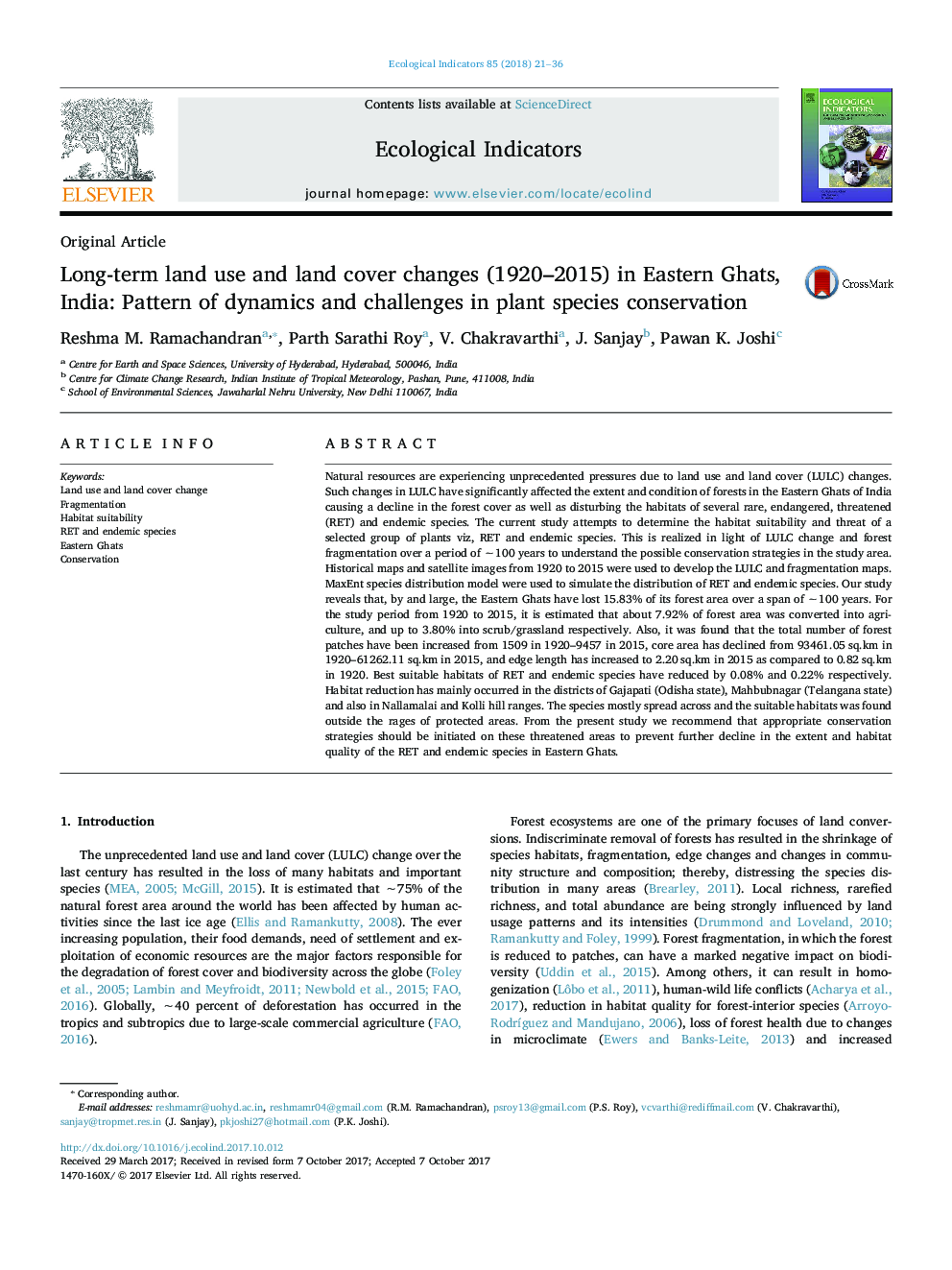| کد مقاله | کد نشریه | سال انتشار | مقاله انگلیسی | نسخه تمام متن |
|---|---|---|---|---|
| 5741291 | 1617117 | 2018 | 16 صفحه PDF | دانلود رایگان |
- 40% reduction in overall forest cover during the last 95 years.
- Agricultural land is often converting into Scrubland.
- Currently mining and urbanization are the key factors of forest and LUCC.
- The habitats of group of rare, endangered and threatened and endemic species either reduced or degraded due to anthropogenic pressure.
- The habitat of RET and endemic species fragmented alarmingly.
Natural resources are experiencing unprecedented pressures due to land use and land cover (LULC) changes. Such changes in LULC have significantly affected the extent and condition of forests in the Eastern Ghats of India causing a decline in the forest cover as well as disturbing the habitats of several rare, endangered, threatened (RET) and endemic species. The current study attempts to determine the habitat suitability and threat of a selected group of plants viz, RET and endemic species. This is realized in light of LULC change and forest fragmentation over a period of â¼100 years to understand the possible conservation strategies in the study area. Historical maps and satellite images from 1920 to 2015 were used to develop the LULC and fragmentation maps. MaxEnt species distribution model were used to simulate the distribution of RET and endemic species. Our study reveals that, by and large, the Eastern Ghats have lost 15.83% of its forest area over a span of â¼100 years. For the study period from 1920 to 2015, it is estimated that about 7.92% of forest area was converted into agriculture, and up to 3.80% into scrub/grassland respectively. Also, it was found that the total number of forest patches have been increased from 1509 in 1920-9457 in 2015, core area has declined from 93461.05Â sq.km in 1920-61262.11Â sq.km in 2015, and edge length has increased to 2.20Â sq.km in 2015 as compared to 0.82Â sq.km in 1920. Best suitable habitats of RET and endemic species have reduced by 0.08% and 0.22% respectively. Habitat reduction has mainly occurred in the districts of Gajapati (Odisha state), Mahbubnagar (Telangana state) and also in Nallamalai and Kolli hill ranges. The species mostly spread across and the suitable habitats was found outside the rages of protected areas. From the present study we recommend that appropriate conservation strategies should be initiated on these threatened areas to prevent further decline in the extent and habitat quality of the RET and endemic species in Eastern Ghats.
214
Journal: Ecological Indicators - Volume 85, February 2018, Pages 21-36
